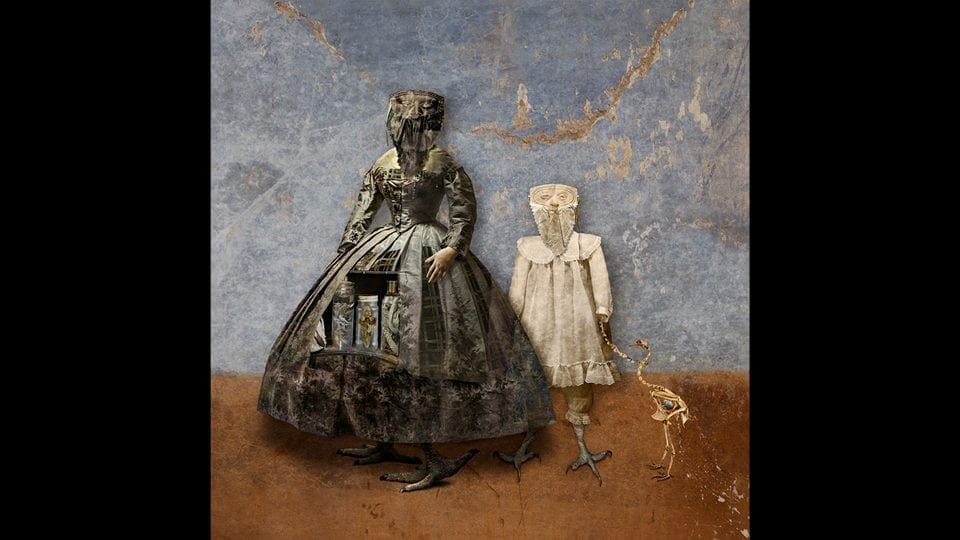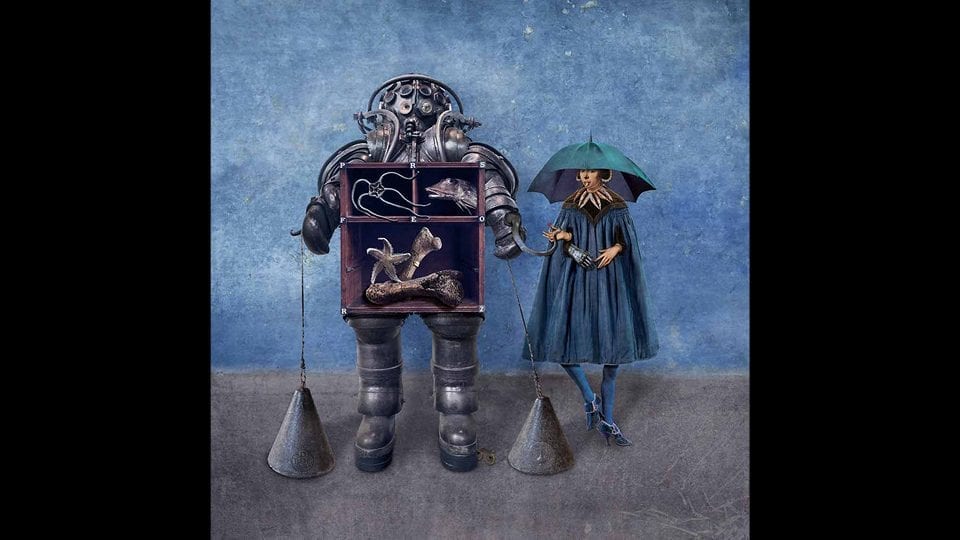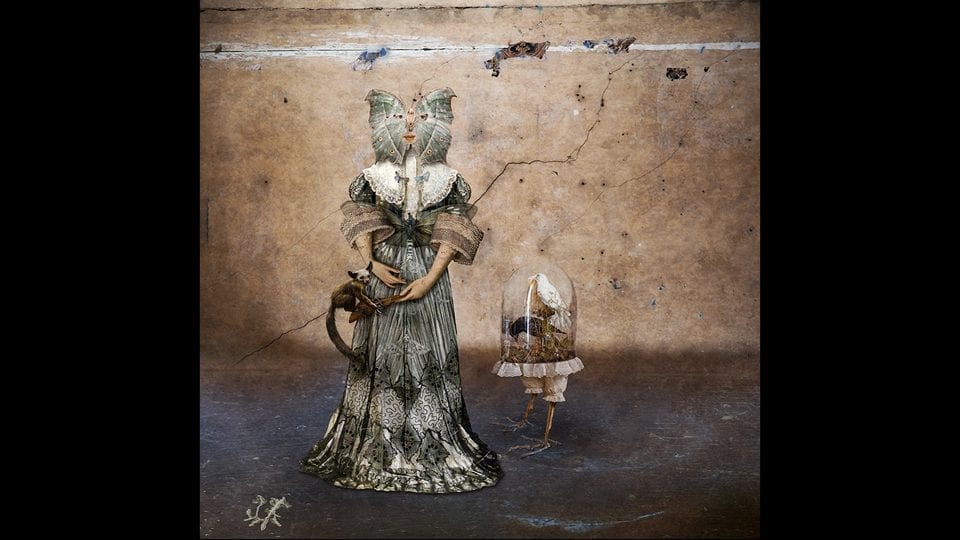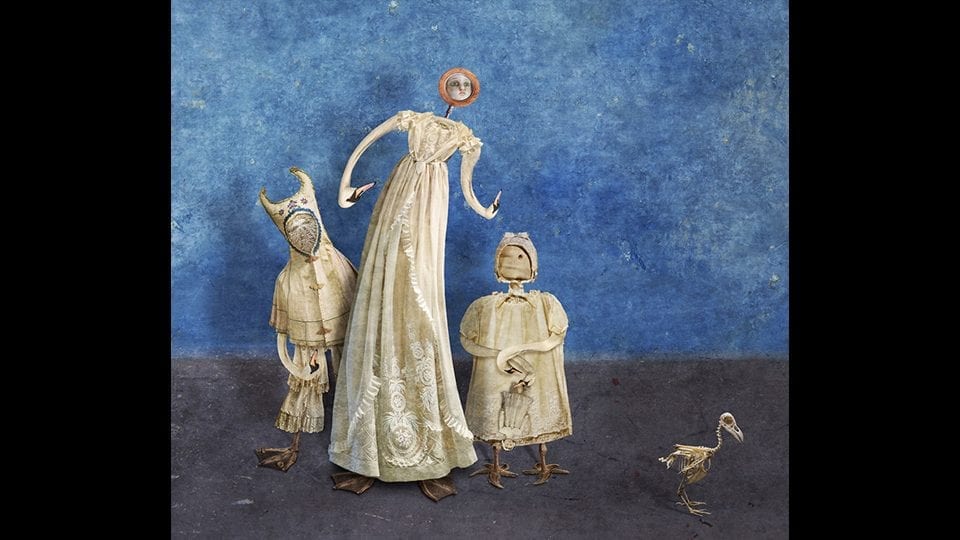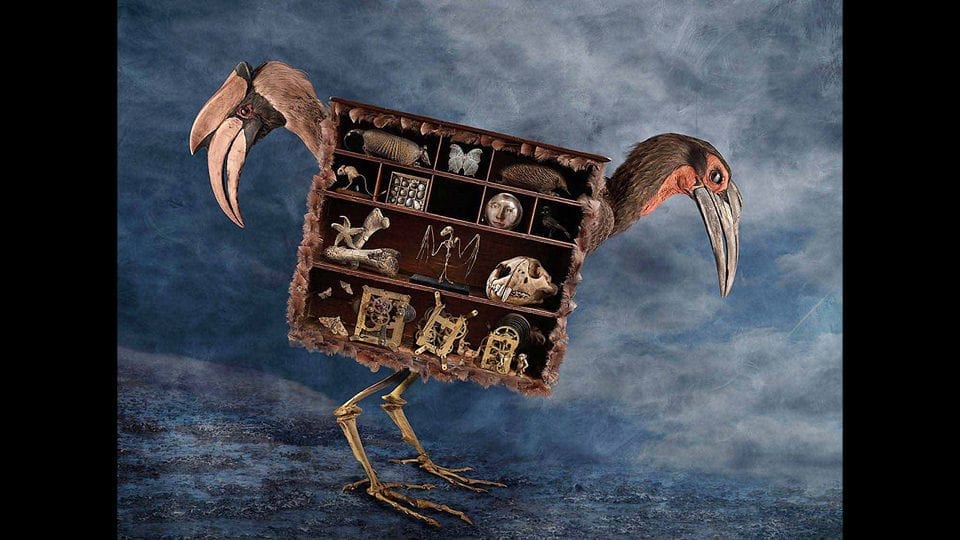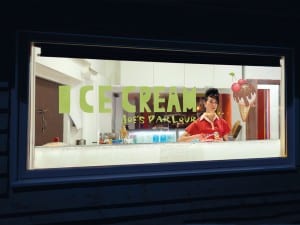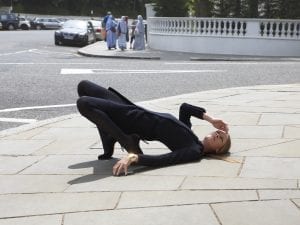Paul Biddle is an award-winning surrealist photographer who creates imaginative and playful pictures. He often makes use of found objects, or photographs of objects from museums. His latest series is inspired by historic cabinets of curiosity and rooms of wonder, and the impact of human activity upon the natural world.
A: Your earlier conceptual work comprised arranged images, all shot on camera. In your latest series you combine photography with digital compositing. How does these working processes differ?
PB: The working process is more or less the same. Composition and form are more important to me than content and meaning. I hope that the viewer will make up their own stories and draw their own conclusions.
The way I work is by assembling some objects or themes that fascinate me at the time. I then deliberately try not to be specific or to choose any meanings to portray. Often it is how the shape of an element in the image reacts with another that excites me and governs the composition. I call this time my “playtime”: it’s a time I need to be alone with the image, and it’s the time when things begin to happen quite unconsciously.
I have been learning Photoshop for over 20 years, as I switched to digital early on and feel relaxed working with it.
A: Your works utilise multiple images which are layered in a single composition. What is the process behind making these images, and why the decision to use layering?
PB: I have photographed museum exhibits all over Europe and have built up a large collection of photographs of natural history items, curiosities and any objects that interest me which I cut out in Photoshop and create these imaginary creatures that inhabit my work.
The process has a direct parallel with the original collectors who scoured Europe on their Grand Tour for curious objects. I just bring back photos rather than the real objects.
A: Your images are painterly – is this deliberate?
PB: I’m much more influenced by painters than photographers, and often paint the backgrounds for my images, but think of myself as primarily a photographer.
In recent exhibitions of the Cabinet of Curiosity series, several people asked if they were paintings rather than photographs. When I combine disparate images I am working with the same techniques of colour palette and composition as any artist.
A: Who inspires you?
PB: Few photographers inspire me, except masters like Irving Penn. I am more influenced by a list of artists from the Renaissance painters through to twentieth century artists, who include Picasso, Max Ernst, Duchamp, de Chirico, Man Ray, Claude Cahun, Marcel Marien, Severini, George Grosz, Jacques Henri Boiffard, Morandi, Carlo Carra, Sironi, Savinio, Dorothea Tanning, Paul Klee, Leonora Carrington; the list goes on.
A: Would you say your creative process begins when sourcing your found objects?
PB: No, not usually. I photograph anything that I find interesting and then play with each of these disparate images to define form and composition back in the studio. Of course I tend to seek out strange and curious items to photograph; equally I can be inspired by cracks in the pavement or old faded colour on a wall in a derelict building.
A: You have said that you do not supply meanings for your art.
PB: I put so much emotion and notions of ideas into them that they tend to naturally open a dialogue with the viewer.
The work of Paul Biddle appears in there Artists’ Directory in Issue 79 of Aesthetica. To pick up a copy, visit our shop: www.aestheticamagazine.com/shop
Credits:
1. Incubation.
2. The Marriage of Mama Cocha.
3. The Languid Lady Lepidoptera.
4. Swan Sisters.
5. Travelling Cabinet of Curiosity.
All images courtesy of the artist.


